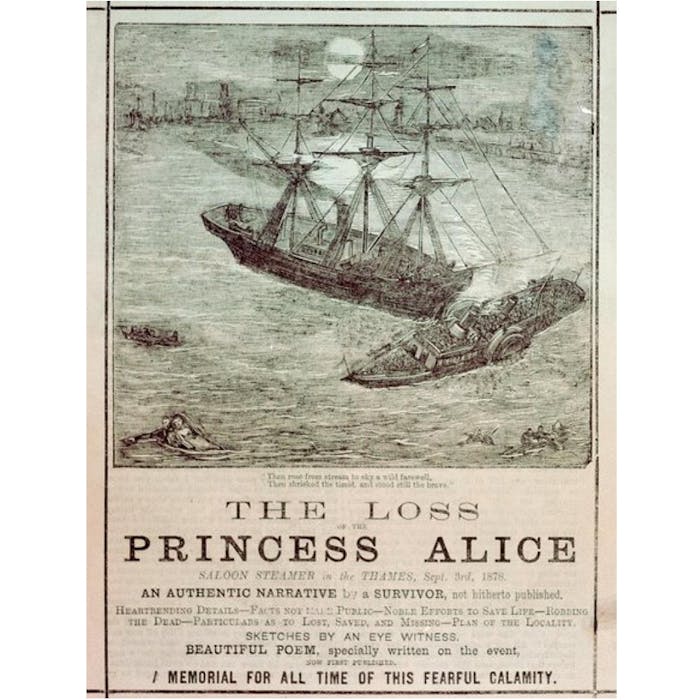
The sinking of the Princess Alice in 1878
In 1873, the SS Princess Alice, a pleasure steamer, collided with another vessel and sank in the Thames. It was the greatest loss of life of any British inland waterway shipping accident.
The Princess Alice carried passengers on a stopping service from Swan Pier, near London Bridge, downstream to Sheerness, Kent, and back - essentially a day trip to the seaside for London tourists.
On the fateful night of 3rd September 1878, the steamer was on her homeward journey, an hour after sunset. The ship entered Gallions Reach and took the wrong sailing line - colliding with the collier Bywell Castle.
The impact was catastrophic, causing the Princess Alice to split into two, plunging hundreds of passengers into the cold, dark waters.
Though the Bywell Castle lowered ropes and launched their lifeboats, as did the many neighbouring ships, the vast majority of the passengers and crew drowned, including the captain of the vessel.
Many passengers were inside the saloon of the pleasure ship and could not escape. Women were impeded by their voluminous Victorian dresses. There were also many young children aboard.
To add to the horror, the point of the collision was the area of the Thames where the Abbey Mills and the Crossness Pumping Station sewage works had their outfalls. 75 million gallons of London's raw sewage had been released just one hour before the collision.
The water was also polluted by the untreated output from Beckton Gas Works, and several local chemical factories. Adding to the foulness of the water, a fire in Thames Street earlier that day had resulted in oil and petroleum entering the river.
About 130 people were rescued from the collision and between 600-700 people died.
As no passenger list was kept on Princess Alice - or a record of the number of people on board - it was not possible to determine precisely the number of people who were killed in the collision.
16 of those who survived died within two weeks due to the ingestion of polluted water, and several others were ill.
Many of the corpses recovered were unidentifiable because the pollution of the water had accelerated decomposition of both bodies and their clothing and possessions.
The aftermath prompted increased scrutiny of safety regulations on the Thames, leading to improved navigation rules and safety measures for river traffic.
The Bywell Castle went missing at sea five years later and was presumed sunk with the loss of all 40 crew members.
Further reading
Links to external websites are not maintained by Bite Sized Britain. They are provided to give users access to additional information. Bite Sized Britain is not responsible for the content of these external websites.
